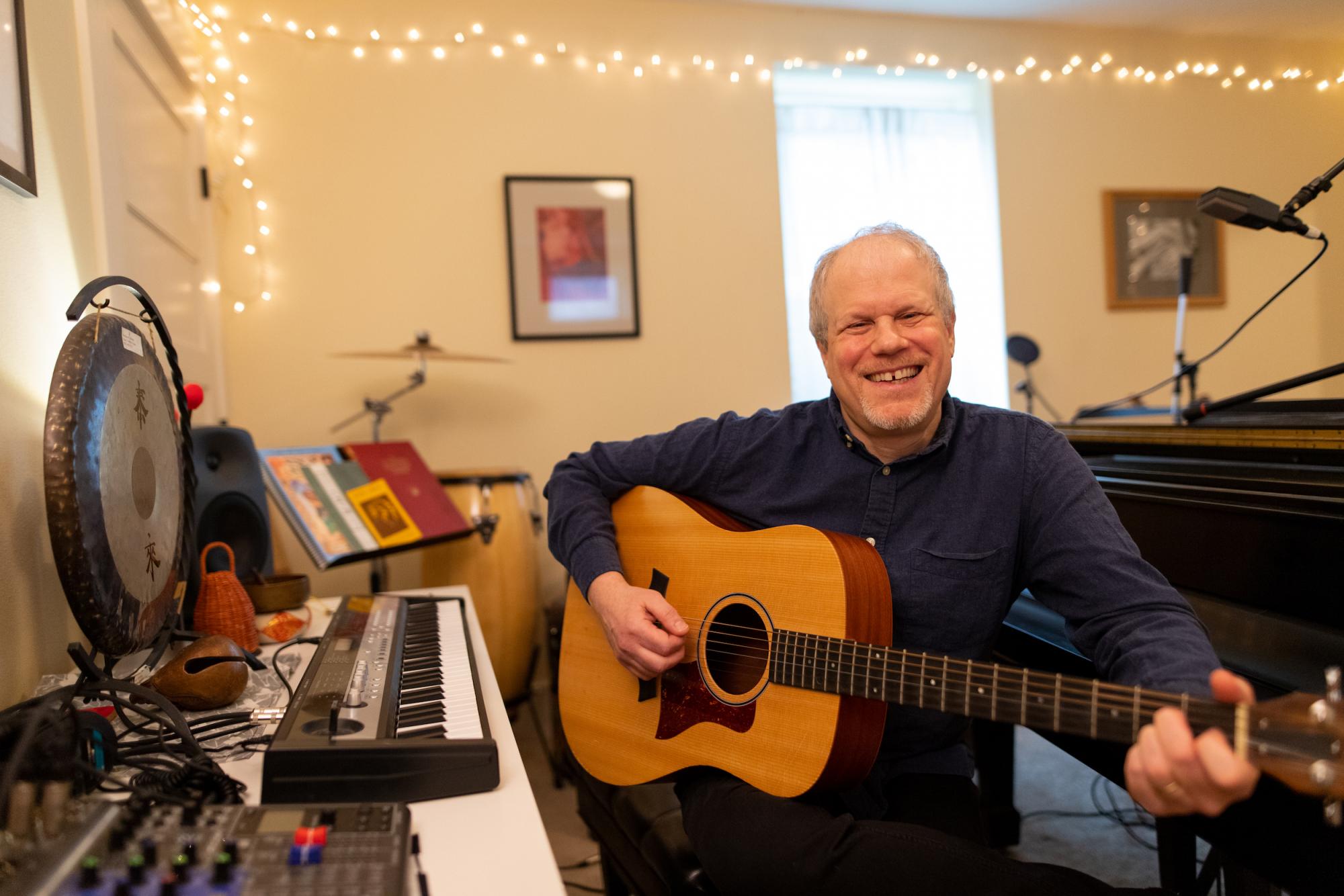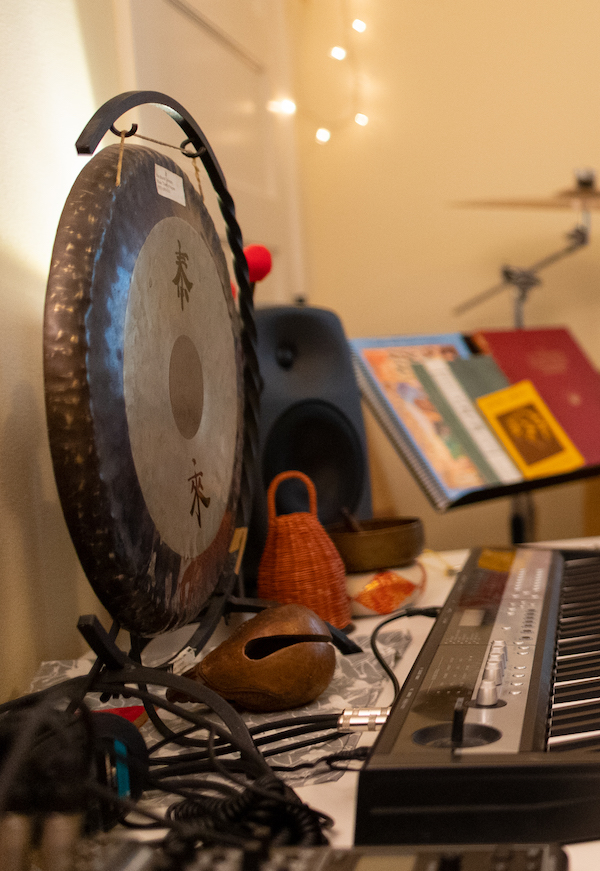
Joshua Pearl ’19 has been improvising his whole life — whether as a student at Oberlin College and Conservatory of Music in the ’80s, as a successful musician for decades in Japan and New York, as an autoimmune patient, and now as a music therapist.
“There’s a lot to be said for how music can divert signals of pain, not actually take the pain away, but lessen pain perception dramatically by putting our focus and attention on sound,” said Pearl, a Pacific University music therapy alumnus.
He learned firsthand about the healing power of music when he was diagnosed in 2014 with pemphigus vulgaris, a rare and life-threatening autoimmune disease. The condition occurs when the immune system mistakenly attacks proteins in the upper layers of the skin, resulting in blisters on the skin and on the lining of the mouth and other mucous membranes.
Pearl describes the two years before he went into remission as “an odyssey of pain,” trying to stave off secondary infections. Treatment with corticosteroids fueled his energy, which led the musician to turn to music. Pearl started playing dissonant notes on the piano that mimicked the physical pain he was feeling. He recorded those sessions and listened to the sounds and he says that helped almost cancel out the pain. Pearl later learned that what he was doing for his own pain relief is called the iso-principle in music therapy. He credits the technique with helping him to rely less on opiates for pain management.
“Turning to music was a very logical thing to do because I had the energy, focus and the motivation to do something with this pain.” – Joshua Pearl '19
The illness and his subsequent reawakening through music left a profound impression on Pearl. He enrolled in a music therapy program and eventually transferred to Pacific University, where he graduated with a bachelor of music therapy degree in 2019. Pearl’s musical background had more than prepared him for the next chapter in his life.
“As music therapists we observe what a client or group is presenting and we musically match it rather than trying to change it. We try to resonate at the same tempo or find the musical quality,” Pearl said. “If you’re working with someone who is experiencing a manic phase and walking around the room, you make the music move with them. A connection is made once you match the energy and qualities that are coming at you. And once that connection is made you can start to affect some change.”
 Before the COVID-19 pandemic broke out, Pearl maintained a thriving private practice blending both his passion for music and his eclectic spirit. He saw mental health patients at a local hospital, worked one-on-one with adults with developmental disabilities, led a memory care group for older adults with acute dementia, and conducted in-home hospice music therapy sessions.
Before the COVID-19 pandemic broke out, Pearl maintained a thriving private practice blending both his passion for music and his eclectic spirit. He saw mental health patients at a local hospital, worked one-on-one with adults with developmental disabilities, led a memory care group for older adults with acute dementia, and conducted in-home hospice music therapy sessions.
“It’s satisfying to be in the role of witness watching a client’s growth and their progress, whatever that looks like and however long that takes them. I consider myself music-centered in my approach,” he said. “Music has a therapeutic quality and acts as a co-therapist with me. When I can see music making a difference in a client’s life who has dementia, watching their eyes light up and coming online, that to me is a testament to the power of music.”
The pandemic has forced Pearl to improvise yet again. He registered with a telehealth provider, to offer remote music therapy, but many facilities lacked the technology to connect patients and his client base shrank. He started working with the next generation of music therapists at Pacific University, supervising students working remotely on their practicum.
He's also leaned into the profession, serving as president of the Oregon Association of Music Therapy starting in 2023.
“The process of going from student to intern to a working music therapist is best thought of as being fluid since you’re always learning,” Pearl said. “We (music therapists) are primarily learning from our clients because they are the ones that teach us what we can’t get from textbooks or lectures. That’s how music therapy really works.”
This story was originally published in the Spring 2021 issue of Pacific magazine.